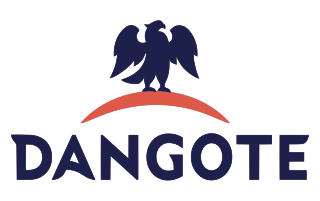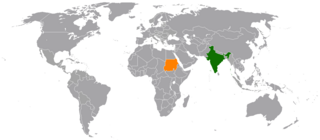
The economy of Pakistan is the 26th largest in terms of purchasing power parity (PPP), and 46th largest in terms of nominal gross domestic product. Pakistan has a population of over 220 million people, giving it a GDP per capita(nominal) of $1,543 which ranks 181st, and giving it a GDP per capita(PPP) of $5,964 which ranks 174th in the world.

The economy of Paraguay is a market economy that is highly dependent on agriculture products. In recent years, Paraguay's economy has grown as a result of increased agricultural exports, especially soybeans. Paraguay has the economic advantages of a young population and vast hydroelectric power. Its disadvantages include the few available mineral resources, and political instability. The government welcomes foreign investment.
The economy of Sudan has boomed on the back of increases in oil production, high oil prices, and large inflows of foreign direct investment until the second half of 2002. GDP growth registered more than 10% per year in 2006 and 2007. From 1997 to date, Sudan has been working with the International Monetary Fund (IMF) to implement macroeconomic reforms, including a managed float of the exchange rate. Sudan began exporting crude oil in the last quarter of 1999.

The economy of Turkmenistan continues to recover from the 2014 downturn in hydrocarbon prices, but remains "in the grip of its worst economic crisis since the immediate postindependence period, driven in part by low gas prices, the suspension of gas exports to Russia between 2016 and 2019...and poor harvests." President Gurbanguly Berdimuhamedow at a session of the Cabinet of Ministers on March 11, 2021, called the rate of GDP growth unsatisfactory. When discussing the 2021 government budget, he noted that 2021 would be "as difficult" a year as 2020 had been. According to the 2020 Investment Climate Statement of the U.S. Department of State,
Turkmenistan’s economy depends heavily on the production and export of natural gas, oil, petrochemicals and, to a lesser degree, cotton, wheat, and textiles. The economy is still recovering from a deep recession that followed the late 2014 collapse in global energy prices. The current investment climate is considered high risk for U.S. foreign direct investment.
The technological and industrial history of China is extremely varied, and extensive. China's industrial sector has shown great progress using most of its technology from the 1950s.
Trade is a key factor of the economy of China. In the three decades following the formation of the Communist Chinese state in 1949, China's trade institutions at first developed into a partially modern but somewhat inefficient system. The drive to modernize the economy that began in 1978 required a sharp acceleration in commodity flows and greatly improved efficiency in economic transactions. In the ensuing years economic reforms were adopted by the government to develop a socialist market economy. This type of economy combined central planning with market mechanisms. The changes resulted in the decentralization and expansion of domestic and foreign trade institutions, as well as a greatly enlarged role for free market in the distribution of goods, and a prominent role for foreign trade and investment in economic development.

Industry was 39.9% of China's gross domestic product (GDP) in 2017. In 2007, industry contributed 46.7 percent of GDP in 2010 and occupied 27 percent of the workforce. In 2015, the manufacturing industrial sectors contributed to 40% of China's GDP. The manufacturing sector produced 44.1 percent of GDP in 2004 and accounted for 11.3 percent of total employment in 2006.
Industry in Ghana accounts for about 24.5% of total GDP. However, Ghana's industrial production is rising at a 7.8% rate, giving it the 38th fastest growing industrial production in the world due to government industrialization policies.
As of 1990, manufacturing in Chad was dominated by agribusiness, and Cotontchad in particular. Next in importance were the National Sugar Company of Chad, the Chadian Textile Company, the Logone Breweries, and the Cigarette Factory of Chad. Observers estimated that these five industries generated some 20 percent of GDP. Of lesser importance were the Farcha Slaughterhouse, the Industrial Agricultural Equipment Company, and Soft Drinks of Chad.
Between 1950 and 1960, the imperial government of Ethiopia enacted legislation and implemented a new policy to encourage foreign investment in the Ethiopian economy. This new policy provided investor benefits in the form of tax exemptions, remittances of foreign exchange, import and export duty relief, tax exemptions on dividends, and the provision of financing through the Ethiopian Investment Corporation and the Development Bank of Ethiopia. In addition, the government guaranteed protection to industrial enterprises by instituting high tariffs and by banning the importation of commodities that might adversely affect production of domestic goods. Protected items included sugar, textiles, furniture, and metal. The government also participated through direct investment in enterprises that had high capital costs, such as oil refineries and the paper and pulp, glass and bottle, tire, and cement industries. In 1963, with the Second Five-Year Plan under way, the government enacted Proclamation No. 51. The proclamation's objective was to consolidate other investment policies enacted up to that period, to extend benefits to Ethiopian investors, and to create an Investment Committee that would oversee investment programs. In 1966 the Ethiopian government enacted Proclamation No. 242, which elevated the Investment Committee's status as an advisory council to that of an authorized body empowered to make independent investment decisions. Thus, by the early 1970s, Ethiopia's industrialization policy included a range of fiscal incentives, direct government investment, and equity participation in private enterprises.

China–Sudan relations refer to the bilateral relations between the People's Republic of China and the Republic of Sudan. China is currently one of Sudan's largest trade partners, importing oil and exporting low cost manufactured items as well as armaments into the country. Both states enjoy a very robust and productive relationship in the fields of diplomacy, economic trade, and political strategy. They formally established diplomatic relations on January 4, 1959, when Sudan formally recognized the sovereignty of the People's Republic of China and have since become close global allies, supporting each other in times of internal crises and international controversy such as during the Second Sudanese Civil War, the Darfur Crisis, and the Xinjiang Conflict. China continues to provide massive support to Sudan by developing its oil resources and supplying millions of dollars in loans, aid, foreign direct investments, and humanitarian assistance. In return, Sudan has become a reliable political and economic ally in the international arena, allowing China to maintain a significant stake in its oil sector.

Agriculture in Sudan plays an important role in that country's economy. Agriculture and livestock raising are the main sources of livelihood for most of the Sudanese population. It was estimated that, as of 2011, 80 percent of the labor force were employed in that sector, including 84 percent of the women and 64 percent of the men.

The Dangote Group is a Nigerian multinational industrial conglomerate, founded by Aliko Dangote. It is the largest conglomerate in West Africa and one of the largest on the African continent. The group employs more than 30,000 people, generating revenue in excess of US$4.1 billion in 2017.

India–Sudan relations, also called Indian-Sudanese relations or Indo-Sudanese relations, refers to the international relations that exists between India and Sudan.

The economy of South Sudan is one of the most oil dependent economies in the world, despite being endowed with bountiful natural resources. It has a very fertile agricultural land and vast number of livestock. The livestock include over 60 million cattle, sheep and goats. Political instability, poor governance, and corruption continue to hinder development in the world's youngest country.
Energy in Sudan describes energy and electricity production, consumption and imports in Sudan. The chief sources of energy in 2010 were wood and charcoal, hydroelectric power, and oil. Sudan is a net energy exporter. Primary energy use in Sudan was 179 TWh and 4 TWh per million persons in 2008.

Indonesia–Sudan relations was officially established in 1960. In February 2012, during a visit of Sudanese Foreign Minister Ali Karti to Jakarta, Indonesia and Sudan has agreed to foster bilateral relations in politics, science, education and economic sectors. Indonesia has an embassy in Khartoum, while Sudan has an embassy in Jakarta. Both countries have Muslim-majority population and both are members of Organisation of Islamic Cooperation.
This article discusses the economic history of Sudan.
Sudan had a modern irrigated agriculture sector totaling about 800,000 hectares in 2010, out of about 84 million hectares that were potentially arable. This was a slight decline from the prior year and well below the more than 2 million hectares of the early 1990s. The Nile and its tributaries were the source of water for 93 percent of irrigated agriculture, and of this, the Blue Nile accounted for about 67 percent. Gravity flow was the main form of irrigation, although pumps served part of the irrigated area.
This article is about the foreign trade of Sudan.










